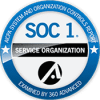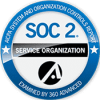Person-centered care is a framework that healthcare payers and providers use to ensure care plans address the full spectrum of health-related needs that members face, including medical, behavioral, and social determinants of health (SDOH).
In contrast to other models of care, a person-centered approach to care recognizes that each member deserves a care plan that integrates personal preferences, values and goals.
This member-centered model is especially crucial as the number of people in the United States affected by chronic diseases continues to rise. Already, 25% of adults are wrestling with multiple chronic diseases and by 2025, over 50% of Americans will be struggling with at least one chronic condition.
Continue reading to learn more about what person-centered care is, its benefits, and how advancing technology is making it easier for payers and health care professionals o implement his superior care model.
Page Content
What is Person-Centered Care?
The person-centered care model is focused on treating the whole person, not just their chronic or acute medical needs.
Addressing behavioral and social needs alongside physical health can have a positive impact on health outcomes.
In practice, this usually looks like a care manager working with a member and their care team to create a care plan that ensures the member gets these three things:
- The immediate needs for physical and behavioral care (e.g. medication, treatment, and therapy).
- Help mitigating any social determinant factors that are negatively impacting the member’s health (e.g. access to nutritious food and community support systems).
- Proactive efforts to detect and prevent future illness from developing (e.g. cancer screening, vitamins, and exercise).
Features of Person-Centered Care
Person-centered care integrates patients, their family members or caregivers providers, and payers into a cohesive team that’s driving towards the same goal — improved health status. This common goal gives this care model a number of features and advantages over competing fee-for-service-based models.
Three of the most impactful features include:
- Enhanced information sharing. Person-centered care motivates all the providers involved in a member’s care to collaborate towards value-based care. This leads to proactive information sharing, with payers, providers, and members all using software like Incedo™ to exchange the most up-to-date data (e.g. test results, medication, and blood pressure readings).
- Shared decision making. Increased collaboration enables members to become active participants in the care plan development and decision making process. This drives better health outcomes by empowering members with a say in their care plans that reflects their personal values and goals.
- Truly customized care. By recognizing a member’s SDOH needs and behavioral/physical health, care teams can create truly holistic and customized care plans that address the member’s unique needs.
What Are the Benefits of Person-Centered Care?
Thanks to the features above, a person-centered care plan can deliver a huge range of benefits, including:
- Improved health outcomes. Research consistently shows that person-centered care results in increased positive outcomes, including improved quality of life and health outcomes for members.
- Reduced costs. Thanks to increased information sharing and transparency between providers, duplicate treatments and tests are avoided, thus reducing costs. Over the long term, person-centered care continues to save money by improving member health, which reduces hospital visits and medication costs.
- Increased member satisfaction. By avoiding one-size-fits-all approaches and curating care to the individual, person-centered care makes members feel truly cared for. Additionally, by addressing SDOH and connecting members o their communities, this model measurably improves member satisfaction.
What Does Person-Centered Care Look Like in Different Settings?
The person-centered care model varies in its execution depending on the setting. This is because long-term care facilities, nursing homes, rehabilitation centers, hospitals, and physicians’ offices all offer slightly different models
of care, each one requiring a unique plan to help caregivers at that location deliver truly holistic care to members.
Here’s a quick look at what a person-centered care approach to care looks like in the two most populated healthcare settings:
1. Person-Centered Care in a Hospital Setting
Thanks to their vast resources, hospitals are ideal settings for integrating person-centered care services. Whether it’s for chronic or acute needs, whenever a member enters the hospital ecosystem, they’re evaluated on their immediate physical health need, as well as their behavioral health and SDOH circumstances.
For example, a member that’s brought in for a heart attack, but who is also displaying symptoms of depression and has concerns about how they’ll pay for their medication, needs to have a care plan that addresses all of these needs.
The care team assigned to that member will ensure that the person-centered care plan provides treatment for the heart attack, therapy for the depression, and financial assistance to help the member afford their medication.
Why?
Because payers and providers are finally starting to recognize that fixing acute health problems isn’t enough — if the member is also dealing with mental and social determinant
of health factors, then their health is likely going to worsen and force them back to the hospital.
It may seem counterintuitive, but by investing more funds into treating the member as a whole person (by addressing their physical, mental, and social care needs), hospitals are able to reduce healthcare costs over the long term and cut down on readmissions.
Another way that hospitals practice person
-centered care is by having case managers in place to ask questions like, “When the member is discharged, is it safe to send them home, or would a recovery facility be best?”
Questions like these need to be answered because care doesn’t stop once the member exits the hospital. To continue the example from above, what if someone is recovering from heart failure, but lives on the fifth floor of an elevator-deprived building? In that case, sending them home is only going to aggravate their heart problem.
By learning about the member’s living arrangements
the case manager can mitigate unnecessary risks like these and get the member sent to a rehab center for recovery instead.
2. Person-Centered Care in a Physician’s Office
PCPs are working hard to align with this holistic approach to healthcare. For example, integrated care methods offer effective solutions for helping PCPs institute person-centered care in their practice.
One of the top-performing integrated care methods is the Collaborative Care Model, which pairs primary care providers with a behavioral health care manager. While a PCP isn’t normally equipped to handle behavioral health needs, the addition of a care manager enables them to efficiently pair members with psychiatrists and other mental health specialists.
Integrated care models like the Collaborative Care Model help members receive the most timely, effective, and affordable care possible, and enable PCPs to get members the care they need, when they need it, despite PCP resource limitations.
Answering the Most Common Misconceptions About Person-Centered Care
Instituting a person-centered care approach can take some work, it’s hard to adapt to new technologies, especially since fee-for-service care has been entrenched
in the US since the inception of health insurance in the 1930s.
If you’re still on the fence about this topic, here are answers to two of the most common misconceptions about the person-centered care model:
Myth 1. Person-Centered Care Is Expensive
Person-centered care may mean hiring more staff , such as behavioral health care managers, and can initially require spending more time talking with members, so it makes sense that someone would think this care model is more expensive than other care models.
Fortunately, this is not the case.
Studies consistently show that person-centered care actually reduces costs and saves money. For example, this study found that 90% of the time person-centered care is more cost effective than usual care and also delivers better outcomes.
Implementing person-centered care doesn’t require a large investment, is easy to coordinate (using
software like InfoMC’s Incedo™), and demonstrably increases member, payer, and provider satisfaction.
Myth 2. Person-Centered Care Services Take Too Much Time
While switching to this care model may initially require providers to spend just a little more time with members as they integrate them into a person-centered care plan, long-term studies show that personalized care actually ends up reducing the amount of time spent on a member.
This is because person-centered care treats members holistically, enhancing the relationship with their PCP, getting to the roots of their conditions, mitigating chronic diseases before they start, and keeping them healthy and out of the hospital.
What Does Person-Centered Care Done Wrong Look Like?
When it comes to implementing the person-centered care model incorrectly, the main issue we see is organizations failing to adopt the model across the entire organization. You can’t have a healthcare team where only 50% of doctors and staff are performing person-centered care.
In order for this innovative and effective model to work optimally there needs to be a paradigm shift across the entire organization. And each institution that does this leads us one step closer to transitioning the entire health care system
to this better, modern form of healthcare.
What Does the Future of Person-Centered Care Look Like?
Person-centered care services are only going to get better as technology enhances providers’ capabilities to deliver holistic care. The future of this model will include finding ways to implement innovative products, such as
Bluetooth enabled devices, so that providers and care managers can monitor member health remotely.
Remote patient monitoring will also enable members to take an active role in their own health, taking their blood pressure, tracking weight and blood glucose levels, and performing other tasks without the need to visit a healthcare provider.
The future of person-centered care also looks like the entire health industry switching to this model, driven by its demonstrable
benefits and tight correlation with value-based care.
Because value-based care is all about providing members with holistic, maximally effective care, organizations that implement this payment model quickly advance their
person-centered care approach, thanks to its emphasis on personalized care and raising health outcomes for populations.
How Cutting-Edge Software is Helping Move Person-Centered Care Forward
Social determinants of health and behavioral health are elements of a person’s well-being
that the healthcare industry used to be slow and resistant to address. But now, both behavioral health and SDOH have the spotlight, and payers and providers are looking for innovative solutions to help them address the growing demand for holistic, person-centered care.
Here at InfoMC, we’ve invested in person-centered technology since the inception of this care model. And for years, we’ve been developing software that equips payers and providers with the advanced capabilities necessary to address SDOH, medical, and behavioral health care.
The result of all this work is Incedo™, our person-centered care software solution.
Incedo™ delivers an impressive variety of benefits, including:
- Holistic care collaboration. Gives care teams a single portal through which to coordinate and address the behavioral, physical, and social drivers of health.
- A single, integrated platform. Opens communication between Care Management, Utilization Management, and Clinical Management teams, giving everyone access to the care plan.
- Enhanced data capabilities. Allows everyone involved in the member’s care, including the member and their family, to submit data. Will soon have the capability to receive data from remote monitoring devices.
- Industry-leading security and privacy. Incedo™ is a MARS-E and NIST compliant software, and a HITRUST certified medical management system.
To learn more about how Incedo™ equips you with all the configuration capabilities and tools necessary to deliver effective person-centered care, please contact InfoMC today.








